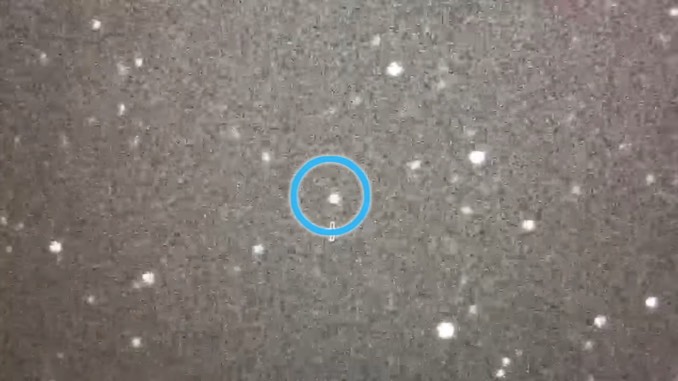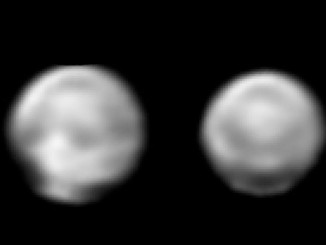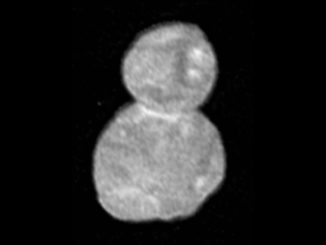
Over the past three months, NASA’s New Horizons spacecraft has been racing toward a New Year’s Day flyby of a Kuiper Belt object known as Ultima Thule, snapping hundreds of photos to measure the body’s brightness and rotation.
But the images do not show any hints of rotation, even though observations in 2017 showed Ultima Thule is not shaped like a sphere. Rather, it is an elongated body or perhaps made up of two asteroid-like objects in direct contact or very close together. One would expect such a body to be rotating and the light reflected from it to oscillate.
“It’s really a puzzle,” said New Horizons Principal Investigator Alan Stern, of the Southwest Research Institute. “I call this Ultima’s first puzzle: why does it have such a tiny light curve that we can’t even detect it? I expect the detailed flyby images coming soon to give us many more mysteries, but I did not expect this, and so soon.”
Researchers have three potential explanations. Ultima’s rotation axis could be aimed at or close to New Horizon’s trajectory. Another explanation is that Ultima “may be surrounded by a cloud of dust that obscures its light curve, much the way a comet’s coma often overwhelms the light reflected by its central nucleus,” said Mark Showalter of the SETI Institute.
But that would require some sort of heat source and at 6.4 billion kilometres (4 billion miles) from the sun, that does not seem likely.
“An even more bizarre scenario is one in which Ultima is surrounded by many tiny tumbling moons,” said Anne Verbiscer, a New Horizons assistant project scientist at the University of Virginia. “If each moon has its own light curve, then together they could create a jumbled superposition of light curves that make it look to New Horizons like Ultima has a small light curve.”
But nothing like that has ever been seen.
“It’s hard to say which of these ideas is right,” Stern said. “Perhaps its even something we haven’t even thought of. In any case, we’ll get to the bottom of this puzzle soon.”
New Horizons is on course to race past Ultima and take high-resolution images on 31 December and 1 January. The first close-up images will be available on Earth just a day later.
“When we see those high-resolution images,” Stern said, “we’ll know the answer to Ultima’s vexing, first puzzle. Stay tuned!”



